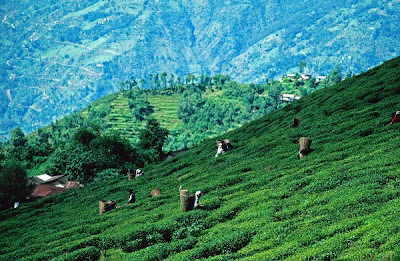Nainital



Nainital is a famous hill station in Uttrakhand state and situated in the Himalaya. Nainital is situated in a valley that contains a pear shaped lake. During summers Nainital’s temperature is – maximum 27° C and the minimum temperature is 7° C. In winter Nainital’s temperature is – maximum 15° C and the minimum is -3° C. Nainital lake is known as Tri rishi sarovar, hints about three rishis – Atri, Pulaha and Pulastya. Nainital was founded in 1841. The Naini lake is the one of other sixty four shakti peeths. From top of the Himalaya you can see the magnificent views of the south and north plain.

Naina Devi Temple : – Nainital is known as the one of sixty four Shakti Peeths, here one of body parts fell down when Lord Shiva was carrying the body of Goddess Parvati (Sati). Eyes of the Goddess were fallen in Nainital. Naina Devi temple is a religious place for all Hindus. This temple was reconstructed after 1880s earthquake. You will get an amazing view of the hill station from the temple by overlooking the lake.

Naini Lake : – This lake is a tourist hot spot and situated in the heart of the city. It is an eye – shaped lake and works as a magnet to attract visitors. Here you can enjoy the boating in the surrounding beauty. The lake’s north end is called as Mallital and the south end is called as Tallital. There are two banks, some shops and a post office on the lake bridge.
Governor’s House : – governor’s house was built in British era (1899). It was at the residence of the governor and it was built in Victorian Gothic style. It is an architectural monument and adding beauty with its lawns, swimming pool, golf course etc. If you want to visit this place you have taken the permission.
Nainital offers the visitor a memorable stay anytime of the year.Nainital is one of the most prominent hill resorts in the Indian subcontinent.

Nainital tourism provides for boating and yachting in Naina Lake. Fishing is also permitted with prior permission from the local authorites. Nainital located at an altitude of 1,938mts above sea level; Nainital derives its name from Naini Lake, a prominent tourist spot of Nainital. Nainital is located in the Kumaon region and is popularly known as the Lake District of India. Naini Lake holds a lot of significance especially among the Hindus as it is believed to be one of the 64 Shakti Peeths, where some parts of the burned body of Sati (Parvati) fell here while being carried by Lord Shiva. Nainital was founded by a European businessman, P. Barron who was in awe with the beauty of the Naini Lake. Nainital is famous for the Naini Lake where it is believed that Lord Shiva performed his tandava with Parvati’s body. The Naini peak or the China peak is the highest in Nainital with a height of 2611mts.














































